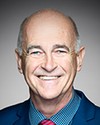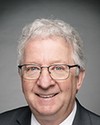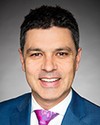First of all, absolutely we'll encourage the continued monitoring of the right whales there, and we would be subject to closures, for example, when you see a number of whales. Those would be some things that would be considered, but in the meantime, I think you can do it with management so there are fewer opportunities for entanglements there.
As well, I think gear configurations in crab are something that can be looked at—fishing and reducing the number of these vertical lines in the water. That is a very workable, sensible solution as opposed to increasing the numbers there. That's exactly what those who have dealt with marine mammal entanglements in the areas before would suggest would make sense as well.
Right now you see that weak rope, for example, might be something that could help disentangle a whale. Again, it's like the ghost gear. It's better to prevent a whale from getting entangled as opposed to putting more rope in the water and having more entanglements and hoping to get them out of the rope and the fishing gear. I think there are certainly a couple of things we can do, and we can learn more from our counterparts in the other parts of the gulf and the Bay of Fundy and other areas that have dealt with them for longer.
Mr. Noël spoke about some of this “on demand” gear. I think it will take time when you talk about $5,000 per piece of equipment. Obviously that's a difficult transition for people, but I believe that once we get more trials, testing and confidence in it, it may be a part of the solution.




